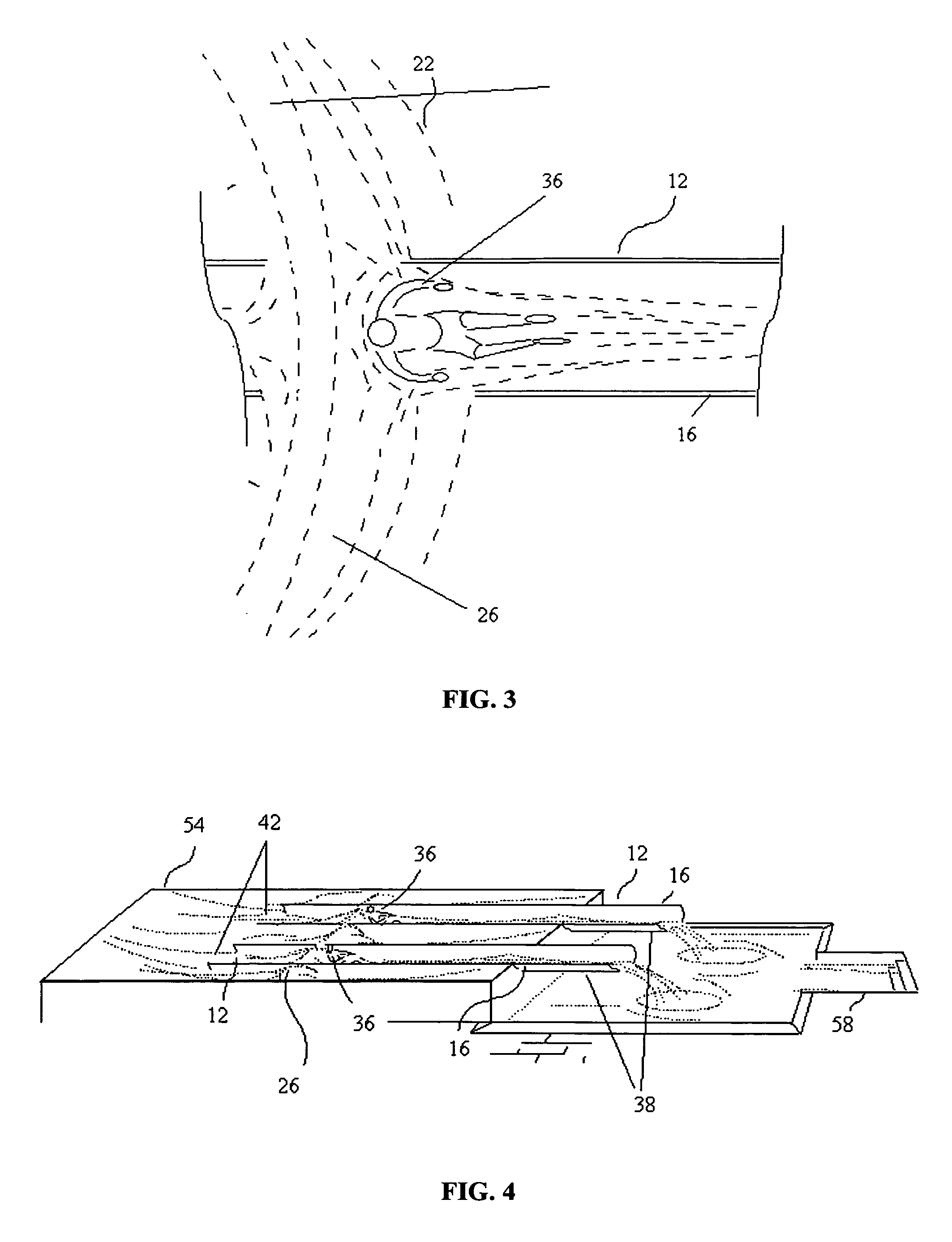Generated wave propulsion water feature
a technology of propulsion water feature and generated wave, which is applied in wave producing pumps, liquid transfer devices, machines/engines, etc., can solve the problems of slow speed of sinking slides, insufficient water flow throughout the slide, and traditional water slides lacked the means to impart additional energy to individuals, etc., to relieve the pressure in the chamber
- Summary
- Abstract
- Description
- Claims
- Application Information
AI Technical Summary
Benefits of technology
Problems solved by technology
Method used
Image
Examples
Embodiment Construction
[0039]It is to be understood that the specific devices and processes illustrated in the attached drawings, and described in the following specification are exemplary embodiments of the inventive concepts defined in the appended claims. Hence, specific dimensions and other physical characteristics relating to the embodiments disclosed herein are not to be considered as limiting, unless the claims expressly state otherwise.
[0040]Preferably the wave generator used in the present invention will not interfere with the chute, will be scalable to various sizes or applications, will be remotely controllable, and will be capable of generating ridable waves. Embodiments of the present invention may include one or more pneumatic wave cannons for the generation of waves, as may be desired for the application. Ocean surface waves are primarily created by winds that cause variations in surface pressure. Wind duration, strength, and surface coverage area contribute to the resulting wave. In short,...
PUM
 Login to View More
Login to View More Abstract
Description
Claims
Application Information
 Login to View More
Login to View More - R&D
- Intellectual Property
- Life Sciences
- Materials
- Tech Scout
- Unparalleled Data Quality
- Higher Quality Content
- 60% Fewer Hallucinations
Browse by: Latest US Patents, China's latest patents, Technical Efficacy Thesaurus, Application Domain, Technology Topic, Popular Technical Reports.
© 2025 PatSnap. All rights reserved.Legal|Privacy policy|Modern Slavery Act Transparency Statement|Sitemap|About US| Contact US: help@patsnap.com



